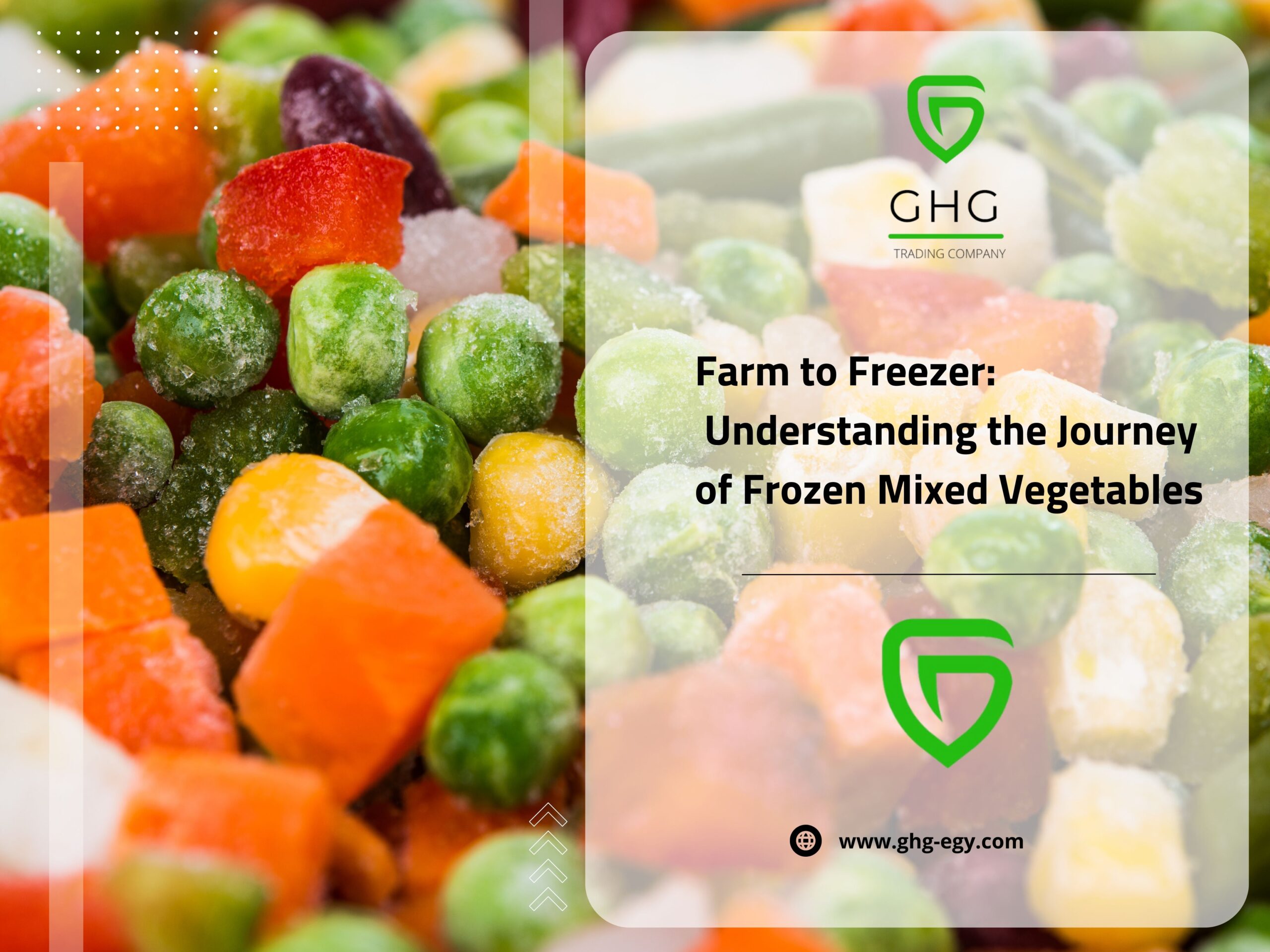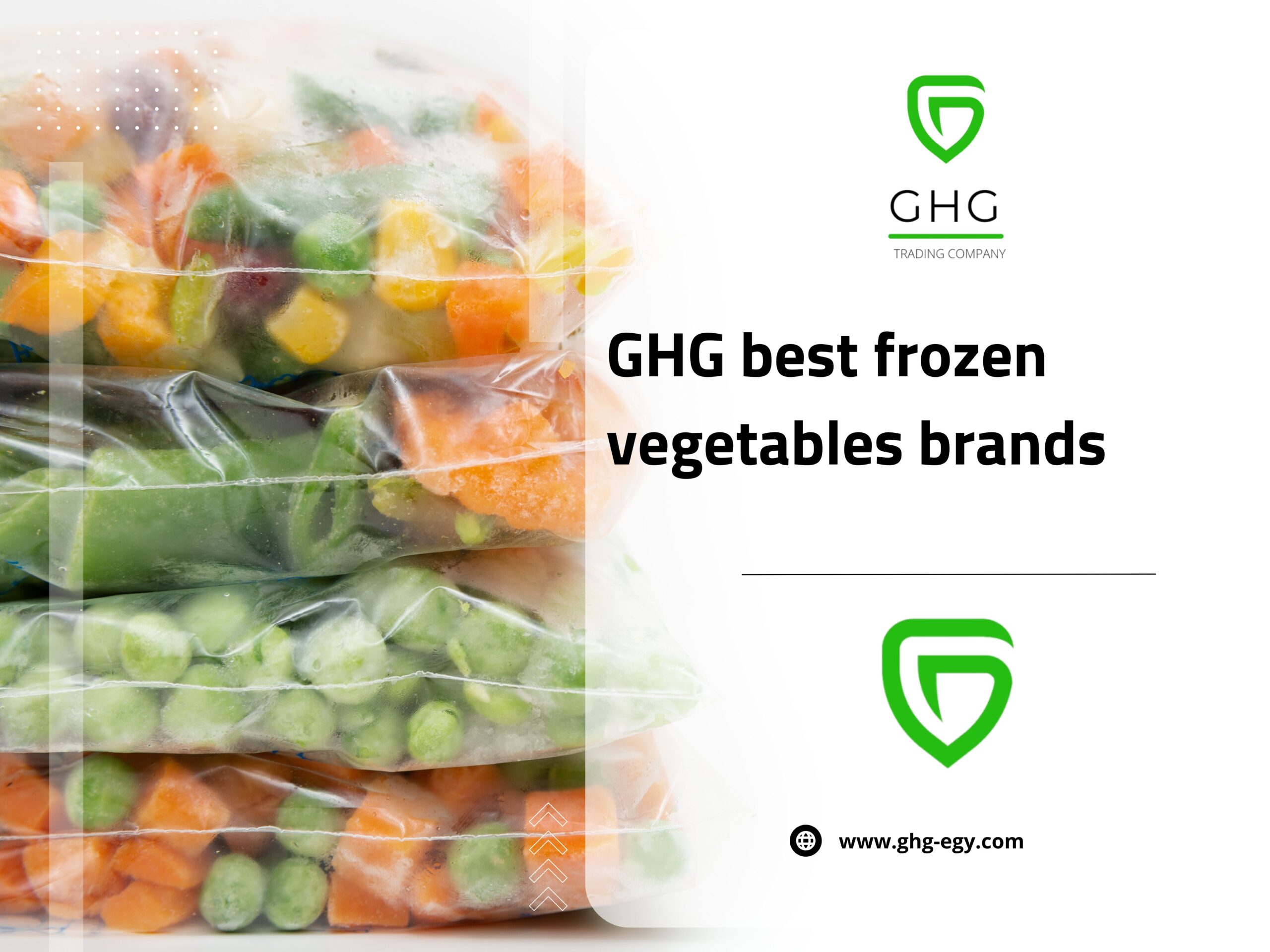What are Frozen Mixed Vegetables?
the Journey of Frozen Mixed Vegetables, Frozen mixed vegetables are a combination of different vegetables such as carrots, peas, corn, beans, and broccoli that have been harvested at peak freshness and then processed and frozen. They are a convenient and versatile option for adding vegetables to meals, as they are already pre-cut and ready to use. Frozen mixed vegetables retain their nutritional value and offer a range of vitamins and minerals to support a healthy diet. They can be easily incorporated into various dishes, making them a popular choice for busy individuals and families.
What are Frozen Mixed Vegetables and their nutritional value?
Frozen mixed vegetables are a combination of different vegetables, such as carrots, peas, corn, beans, and broccoli, that have been harvested at peak freshness and then processed and frozen. They are a convenient and versatile option for adding vegetables to meals. Frozen mixed vegetables retain their nutritional value and offer a range of vitamins and minerals, including vitamin C, fiber, and potassium. They are a healthy addition to any diet and can help meet daily vegetable intake recommendations.
Benefits of using Frozen Mixed Vegetables in your meals
Frozen mixed vegetables offer numerous benefits when incorporated into meals.
- Convenience: They are ready to use, saving time on preparation and reducing waste.
- Nutritional Value: They retain their nutritional value as they are frozen at peak freshness, providing essential vitamins and minerals.
- Versatility: They can be used in a variety of dishes like stir-fries, soups, casseroles, and salads.
- Cost-effective: Frozen mixed vegetables are often more affordable than fresh produce, making it easier to incorporate healthy options into meals.
- Extended Shelf Life: They have a longer shelf life compared to fresh vegetables, reducing the risk of spoilage and food waste.
- Year-round availability: Frozen mixed vegetables are available year-round, ensuring access to a variety of vegetables regardless of the season.
the Journey of Frozen Mixed Vegetables
The farming process of frozen mixed vegetables begins with the cultivation of various vegetables on farms. Farmers carefully plant, nurture, and harvest the vegetables when they are at their peak freshness. This includes vegetables such as carrots, peas, corn, and green beans. The farmers follow industry standards and use sustainable farming practices to ensure the quality and nutritional value of the vegetables. These fresh vegetables are then sent for further processing and freezing to preserve their freshness and flavor.
Overview of the Farming and Harvesting process of Frozen Mixed Vegetables
The farming and harvesting process of frozen mixed vegetables involves cultivating a variety of vegetables such as carrots, peas, corn, and green beans. Farmers carefully plant and nurture these vegetables until they reach their peak freshness. When ready for harvest, the vegetables are carefully picked and sorted to ensure only the best quality ones are selected for further processing. This ensures that the frozen mixed vegetables retain their nutritional value and taste.
Quality control measures in Frozen Vegetable Farms
Quality control measures in frozen vegetable farms play a crucial role in ensuring that the final product is of high quality. Farms implement rigorous inspections and testing processes to monitor the vegetables at various stages of cultivation, harvest, and processing. This includes regular sampling, testing for pesticides and contaminants, and adherence to strict food safety standards. These measures help maintain the nutritional value and freshness of frozen mixed vegetables.
Sorting and Cleaning
Sorting and cleaning are crucial steps in the processing of frozen mixed vegetables. Vegetables are carefully sorted to remove any damaged or spoiled pieces. This ensures that only fresh and healthy vegetables are included in the final product. Cleaning involves thorough washing to remove any dirt or impurities, ensuring the vegetables are clean and safe for consumption. Proper sorting and cleaning techniques help maintain the quality and integrity of frozen mixed vegetables.
Sorting and Cleaning techniques used for Frozen Mixed Vegetables
Frozen mixed vegetables go through thorough sorting and cleaning techniques to ensure their quality and freshness. The sorting process involves meticulously inspecting and removing any damaged or spoiled pieces. After sorting, the vegetables undergo a rigorous cleaning process, which includes washing them carefully to remove any dirt or impurities. These techniques ensure that only fresh and healthy vegetables are included in the final product, maintaining the overall quality and integrity of frozen mixed vegetables.
The significance of proper Sorting and Cleaning in maintaining quality
Proper sorting and cleaning techniques are crucial for maintaining the quality of frozen mixed vegetables. Sorting ensures that only fresh and undamaged vegetables are included, while cleaning removes any dirt or impurities. By eliminating spoiled or contaminated pieces, these processes help preserve the nutritional value, taste, and overall quality of the vegetables. It ensures that customers receive a product that meets high standards and delivers a satisfying culinary experience.
Freezing Techniques
There are different freezing techniques used in the preservation of mixed vegetables. The most common technique is known as “flash freezing,” where the vegetables are rapidly frozen at extremely low temperatures. This process helps to preserve the texture and nutritional content of the vegetables. Vacuum sealing is another technique used, which removes oxygen from the packaging to prevent freezer burn and extend shelf life. These freezing techniques play a vital role in maintaining the taste and quality of frozen mixed vegetables.
Different Freezing Techniques used in the preservation of Mixed Vegetables
There are various freezing techniques used in the preservation of mixed vegetables. One common technique is flash freezing, where the vegetables are rapidly frozen at extremely low temperatures. This helps to maintain the texture and nutritional content of the vegetables. Vacuum sealing is another method used. By removing oxygen from the packaging, it prevents freezer burn and extends the shelf life of the vegetables. These freezing techniques are crucial in preserving the taste and quality of frozen mixed vegetables.
Impact of Freezing Techniques on the taste and nutrition of Frozen Mixed Vegetables
Different freezing techniques have a significant impact on the taste and nutritional quality of frozen mixed vegetables. Flash freezing helps to preserve the texture and flavor of the vegetables by rapidly freezing them at low temperatures. Vacuum sealing removes oxygen, preventing freezer burn and maintaining the nutritional content. These techniques ensure that frozen mixed vegetables retain their taste and nutritional value, making them a convenient and healthy option for meals.
Storage and Transport
Storage and Transport: Proper storage and transport methods are crucial in maintaining the quality and freshness of frozen mixed vegetables. After the freezing process, the vegetables are carefully packaged in airtight containers or bags to prevent any moisture or air from entering. They are then stored in temperature-controlled freezers to maintain their texture and nutritional value. During transport, these frozen packages are kept in climate-controlled trucks or containers to ensure they stay frozen until they reach their destination. The use of proper storage and transport methods guarantees that the frozen mixed vegetables retain their quality and are ready to be enjoyed when they reach the consumer’s plate.
Storage and Transport methods for Frozen Mixed Vegetables
Proper storage and transport methods are crucial in maintaining the quality and freshness of frozen mixed vegetables. After the freezing process, the vegetables are carefully packaged in airtight containers or bags to prevent any moisture or air from entering. They are then stored in temperature-controlled freezers to maintain their texture and nutritional value. During transport, these frozen packages are kept in climate-controlled trucks or containers to ensure they stay frozen until they reach their destination. The use of proper storage and transport methods guarantees that the frozen mixed vegetables retain their quality and are ready to be enjoyed when they reach the consumer’s plate.



